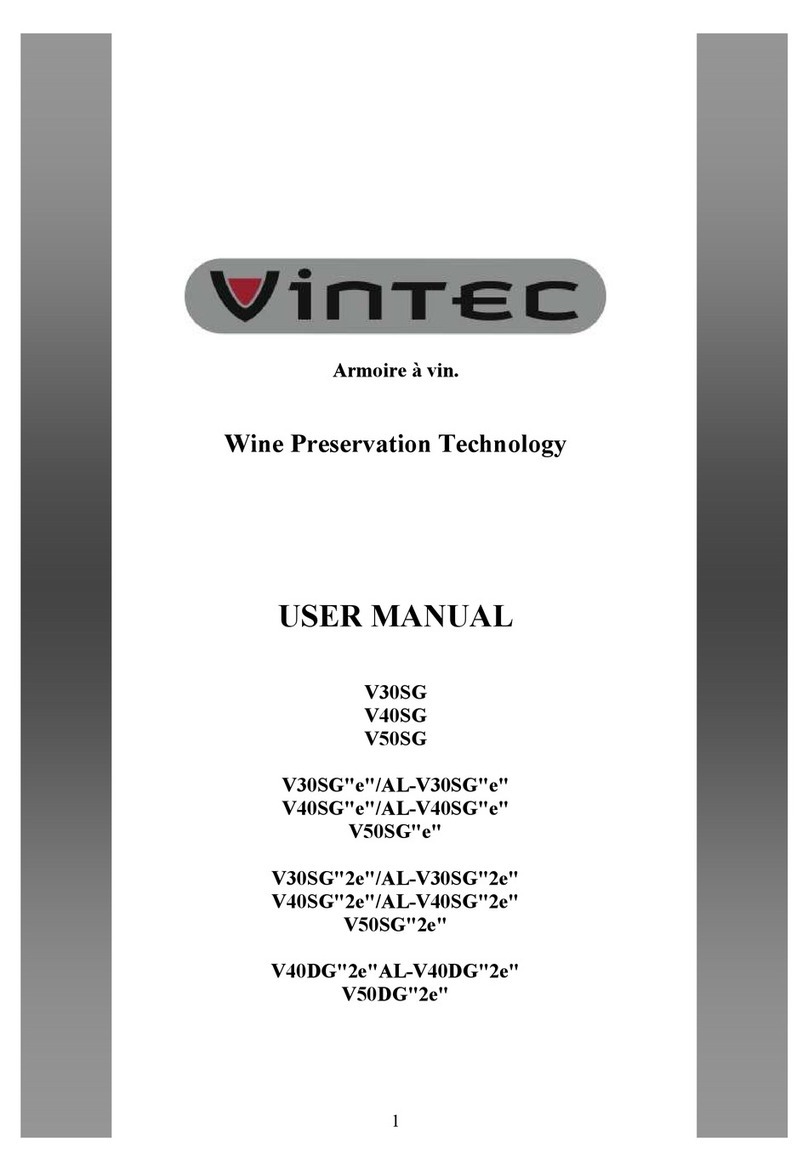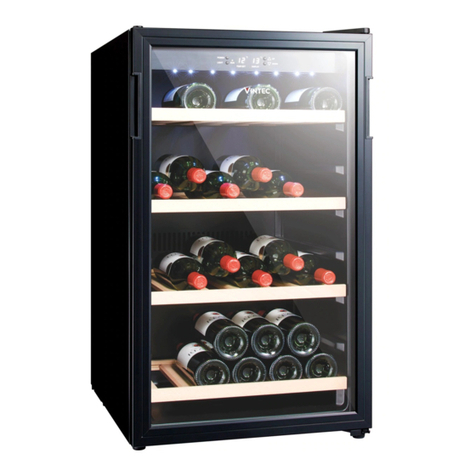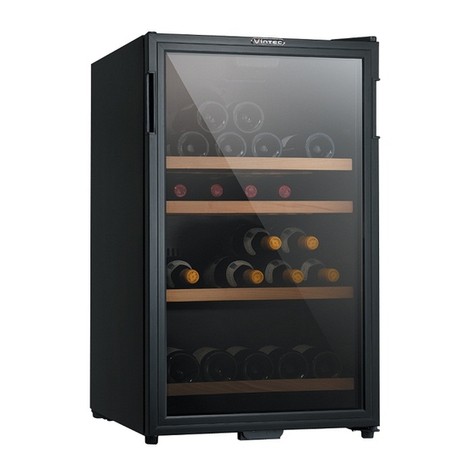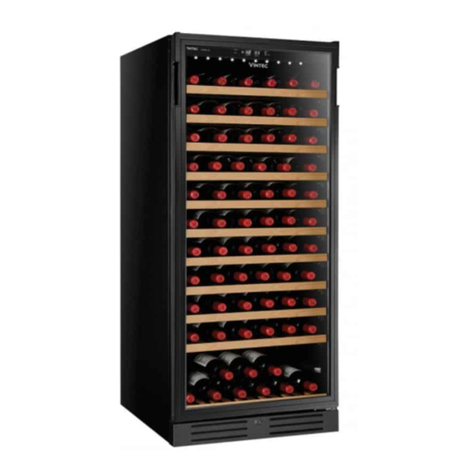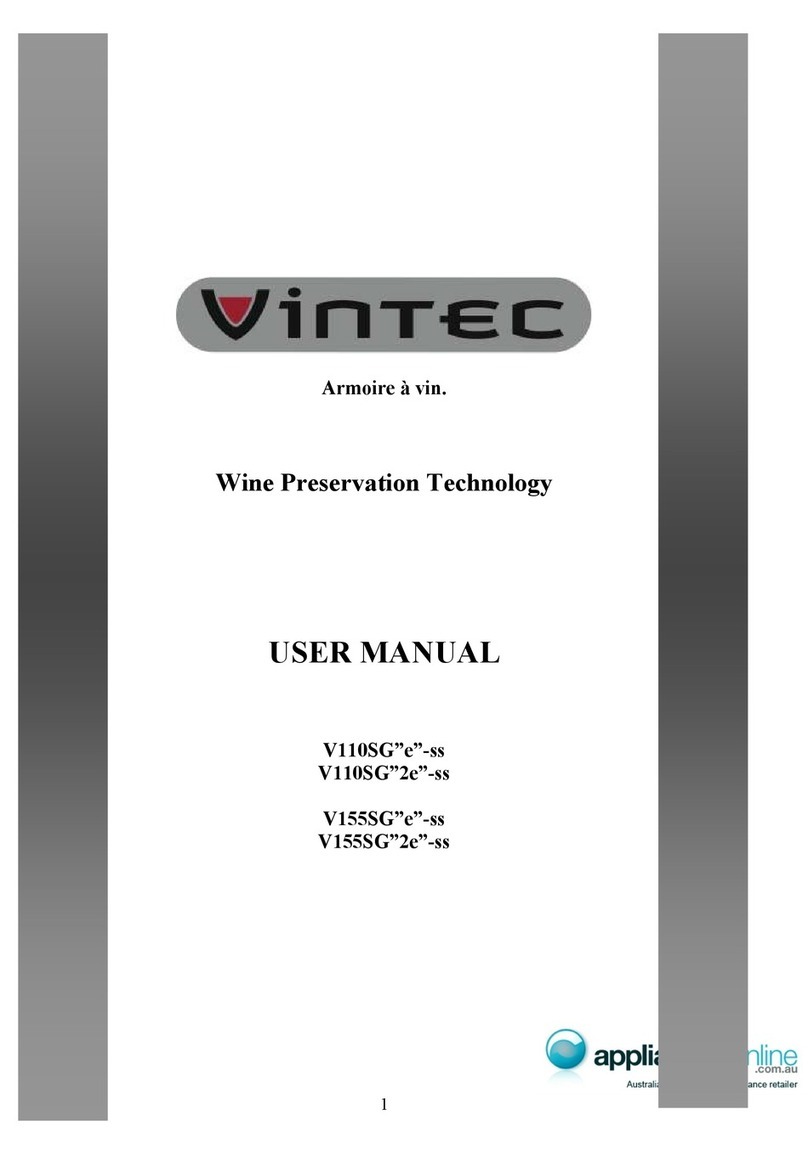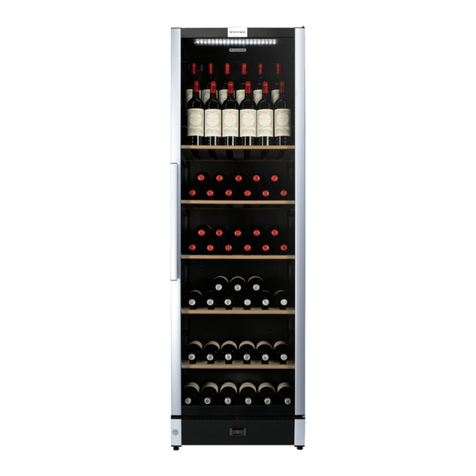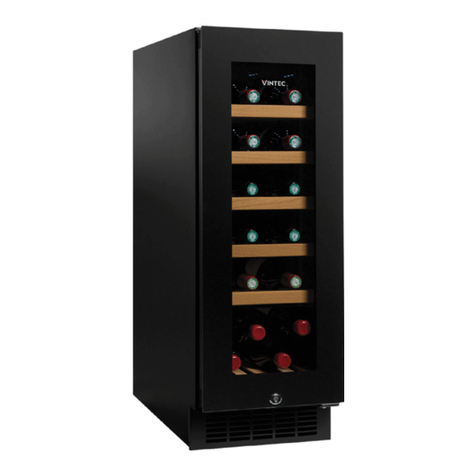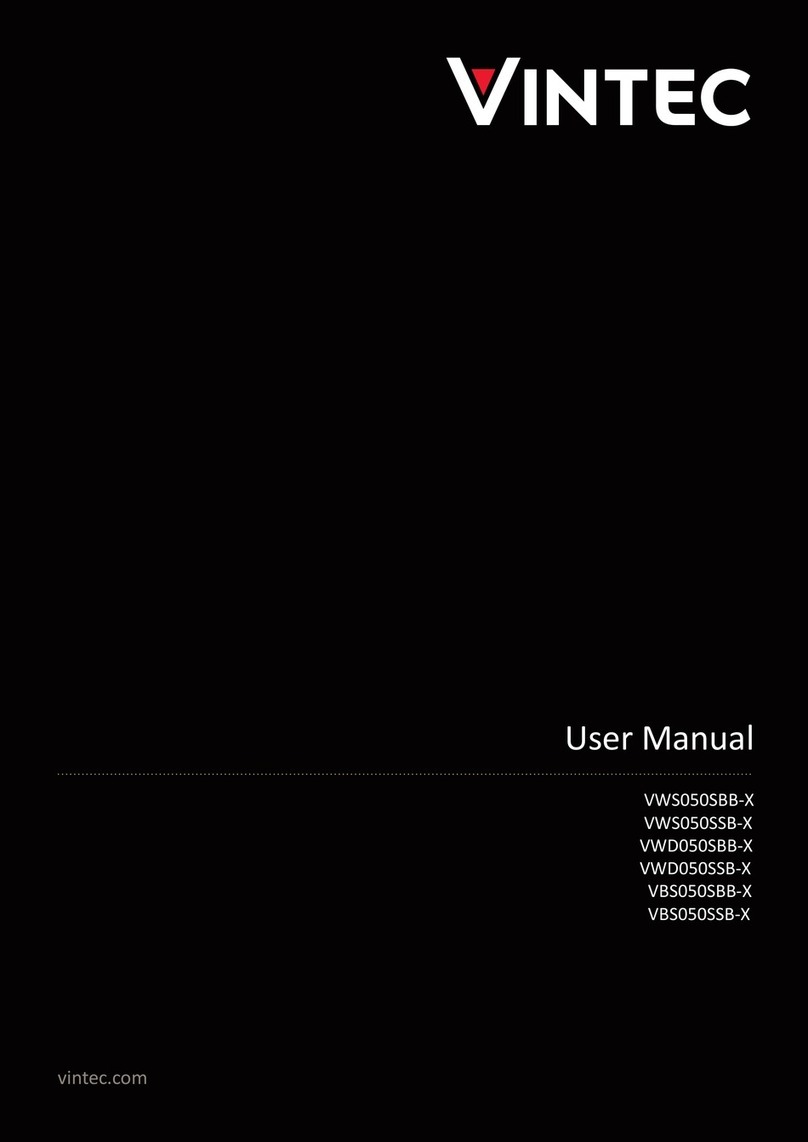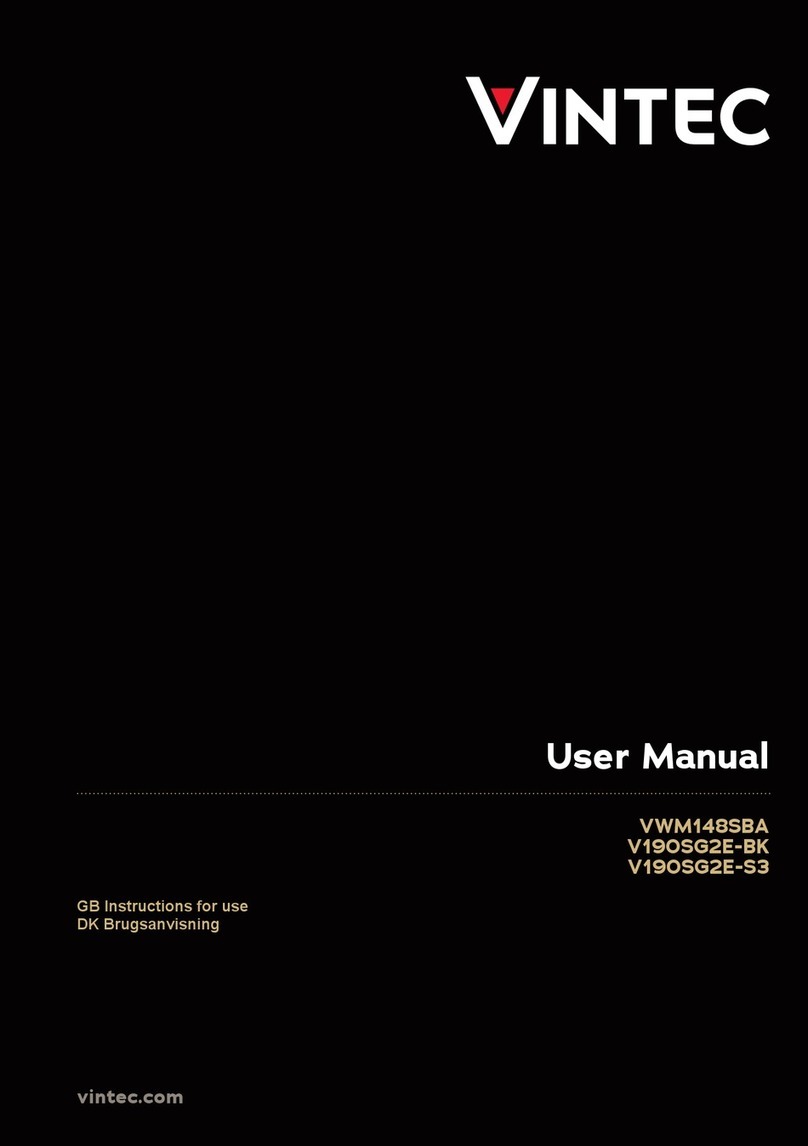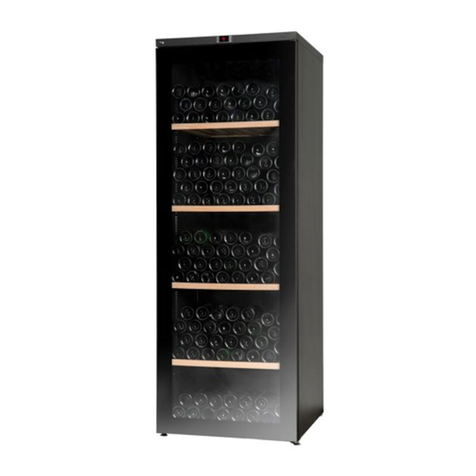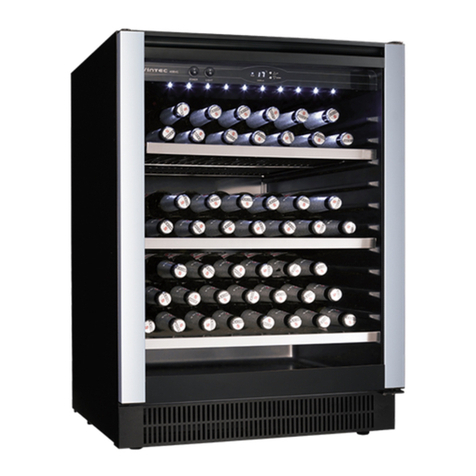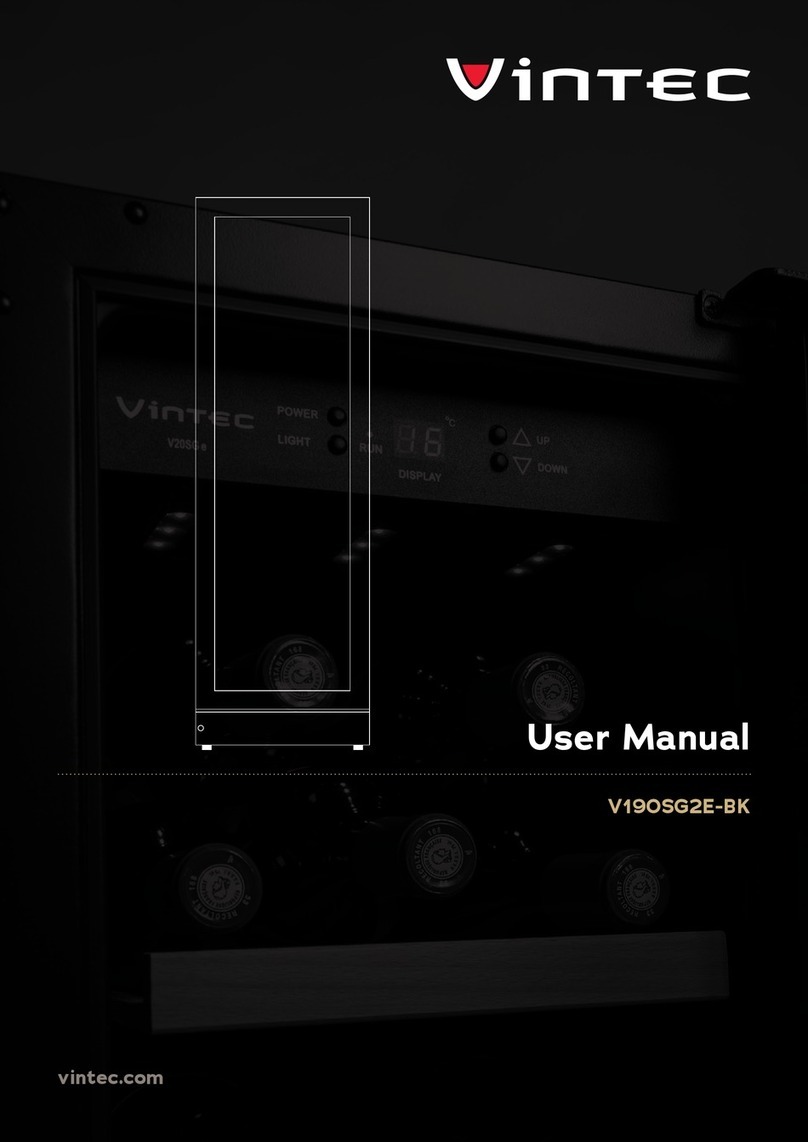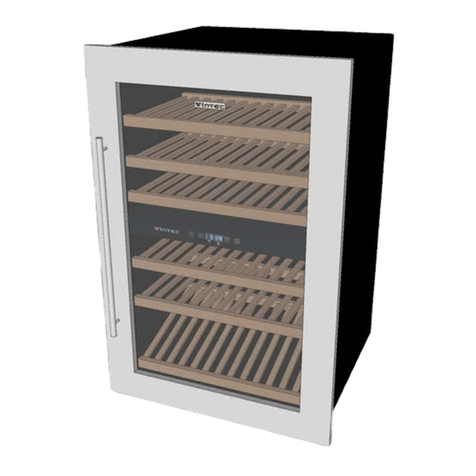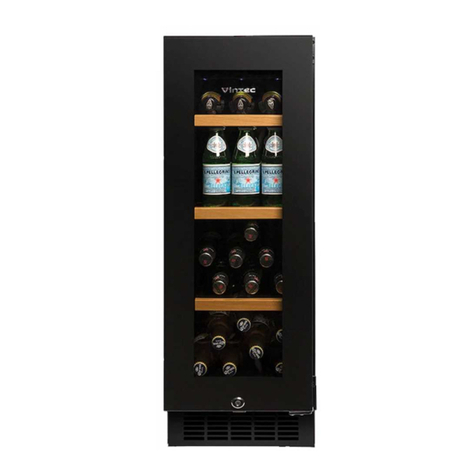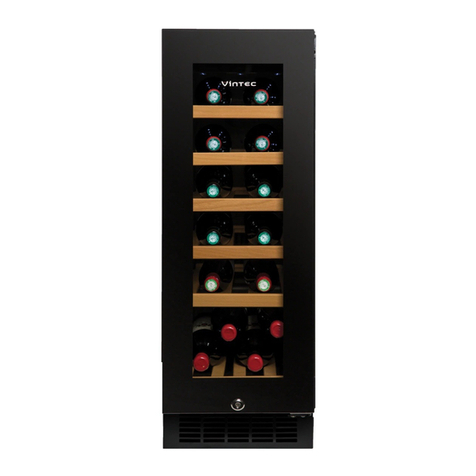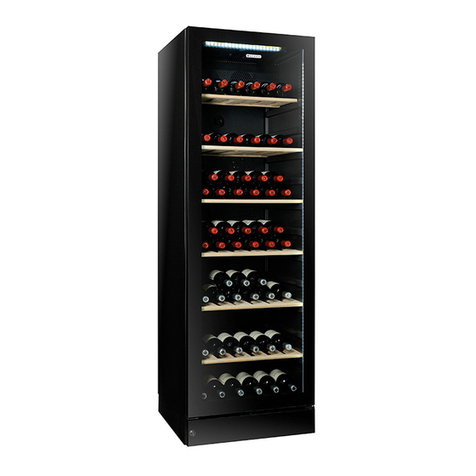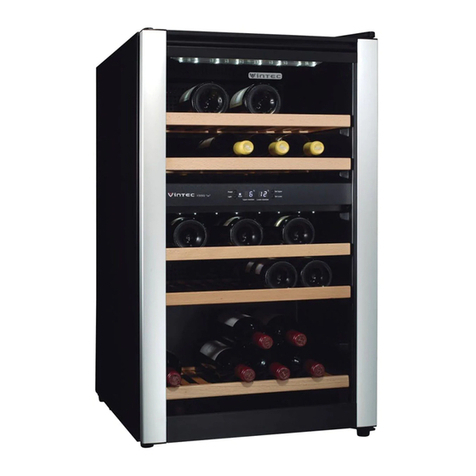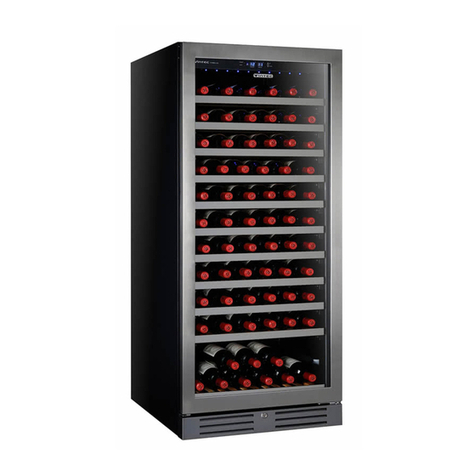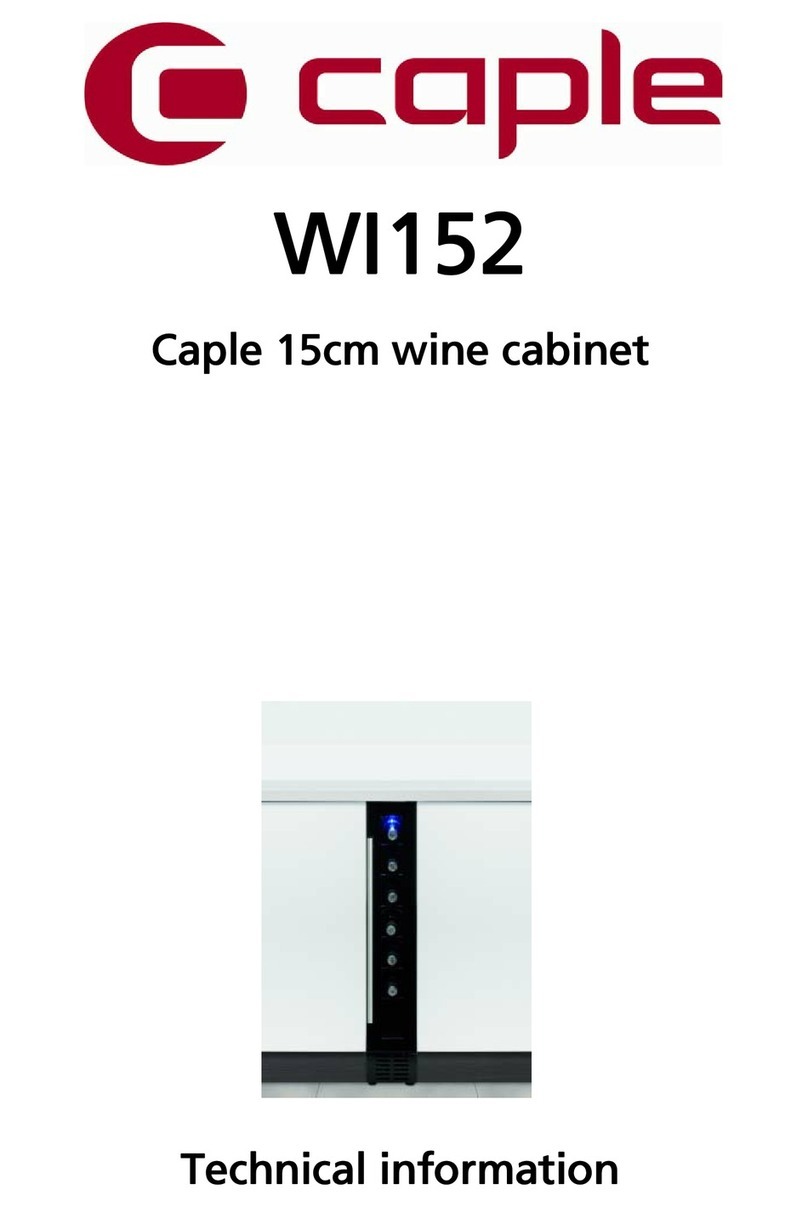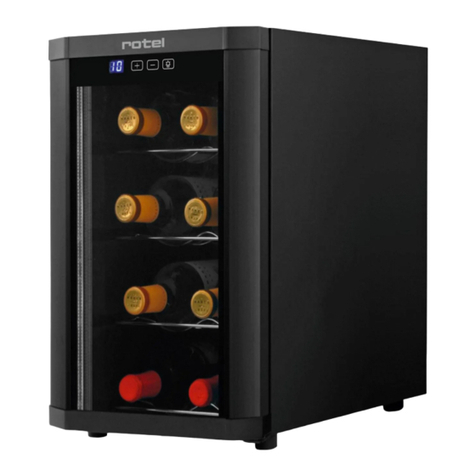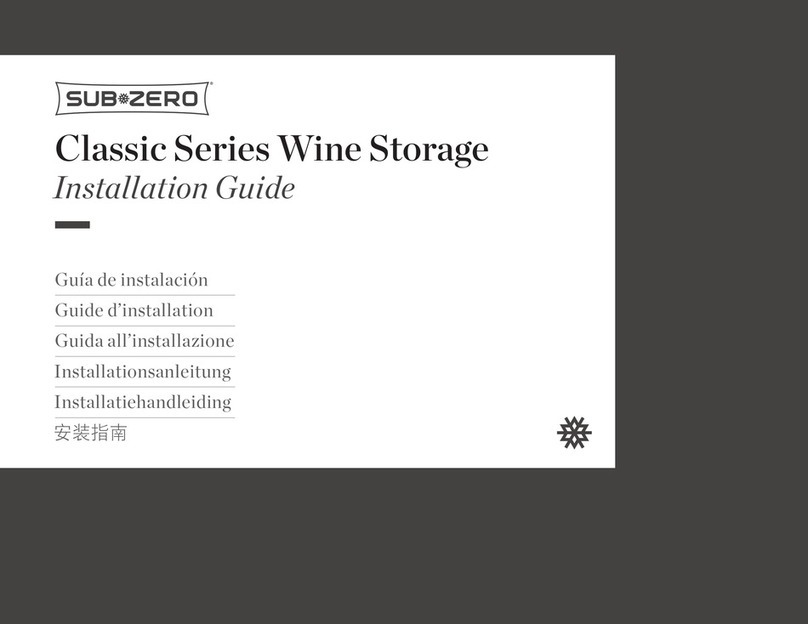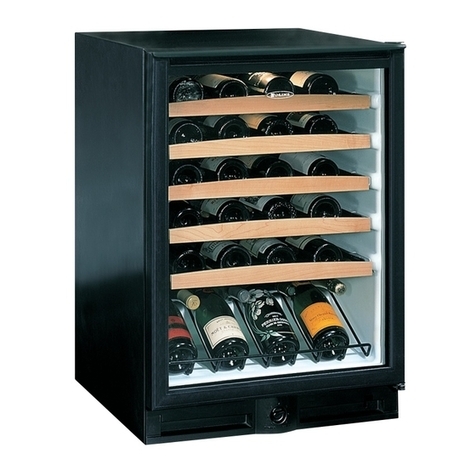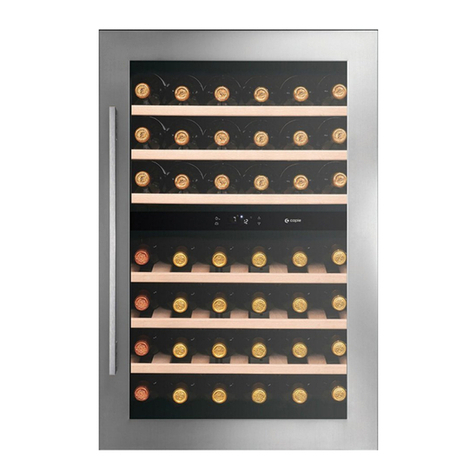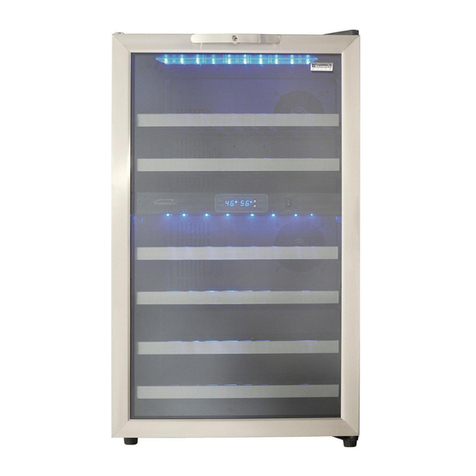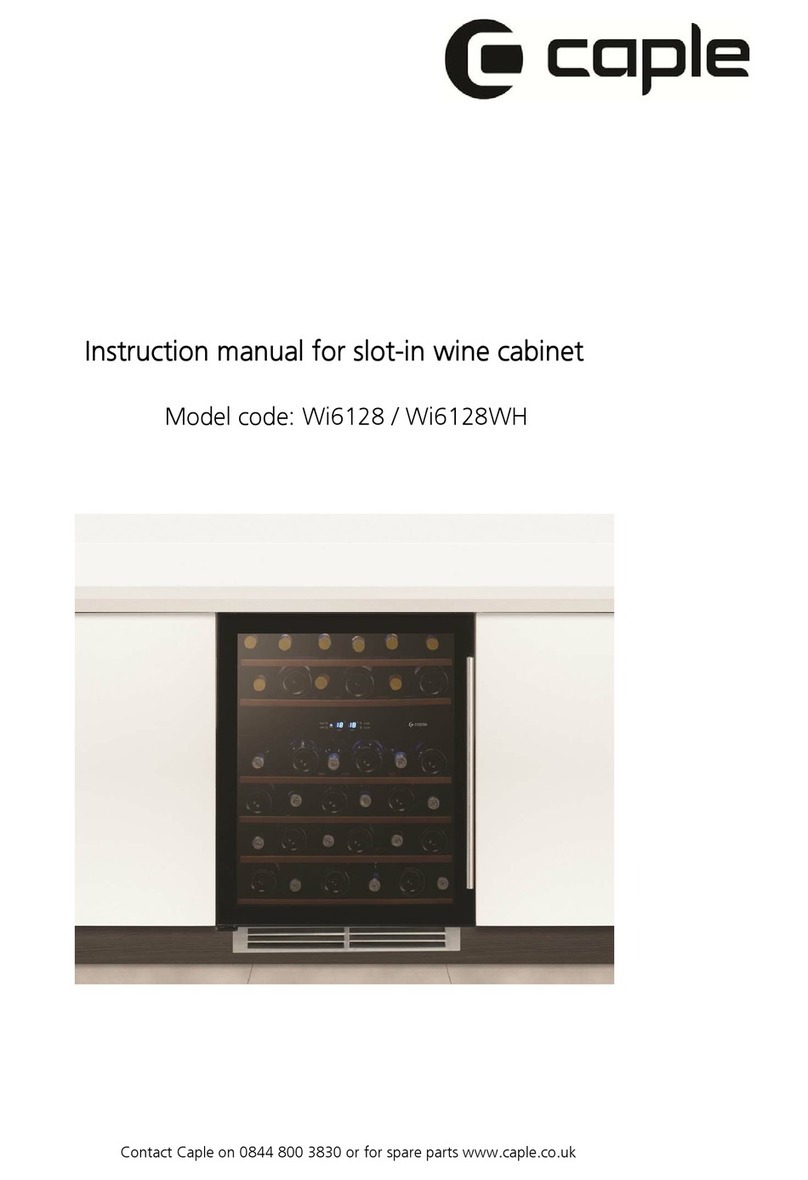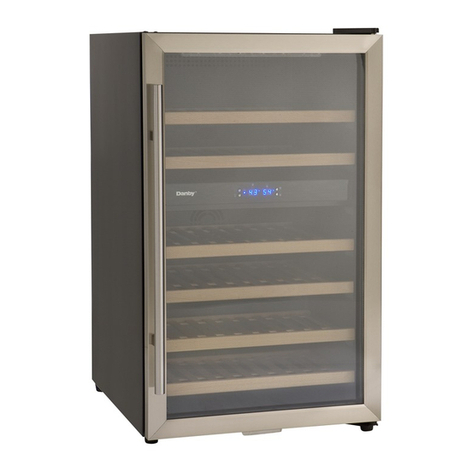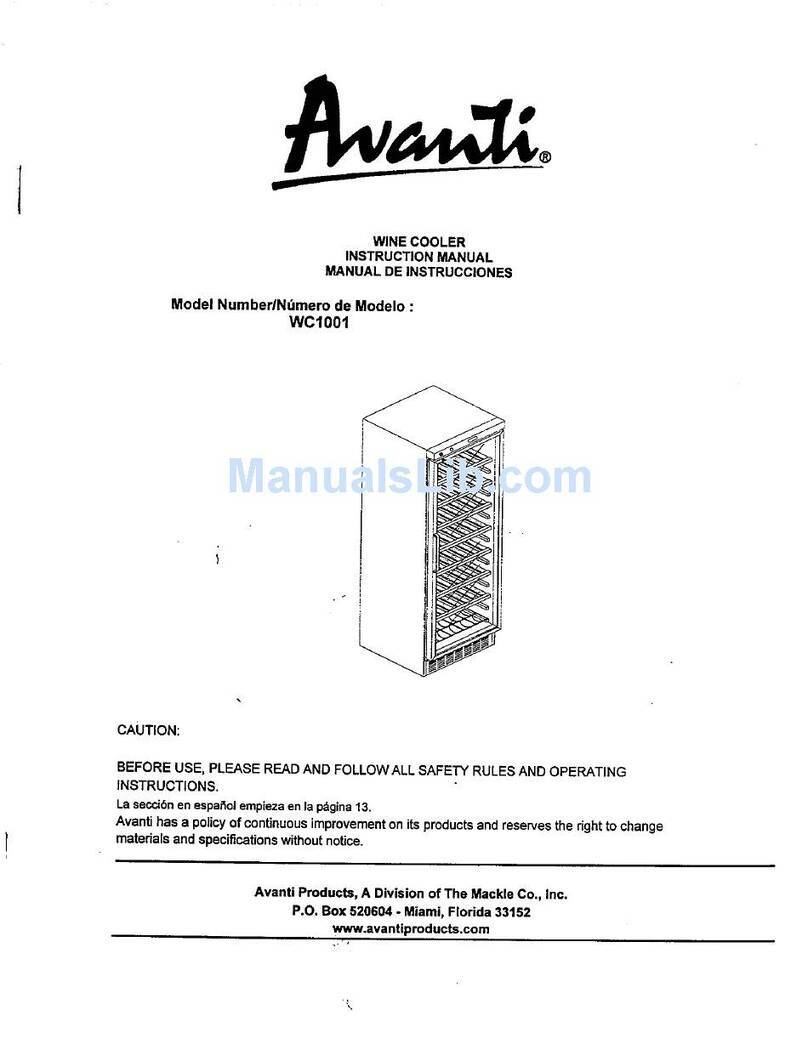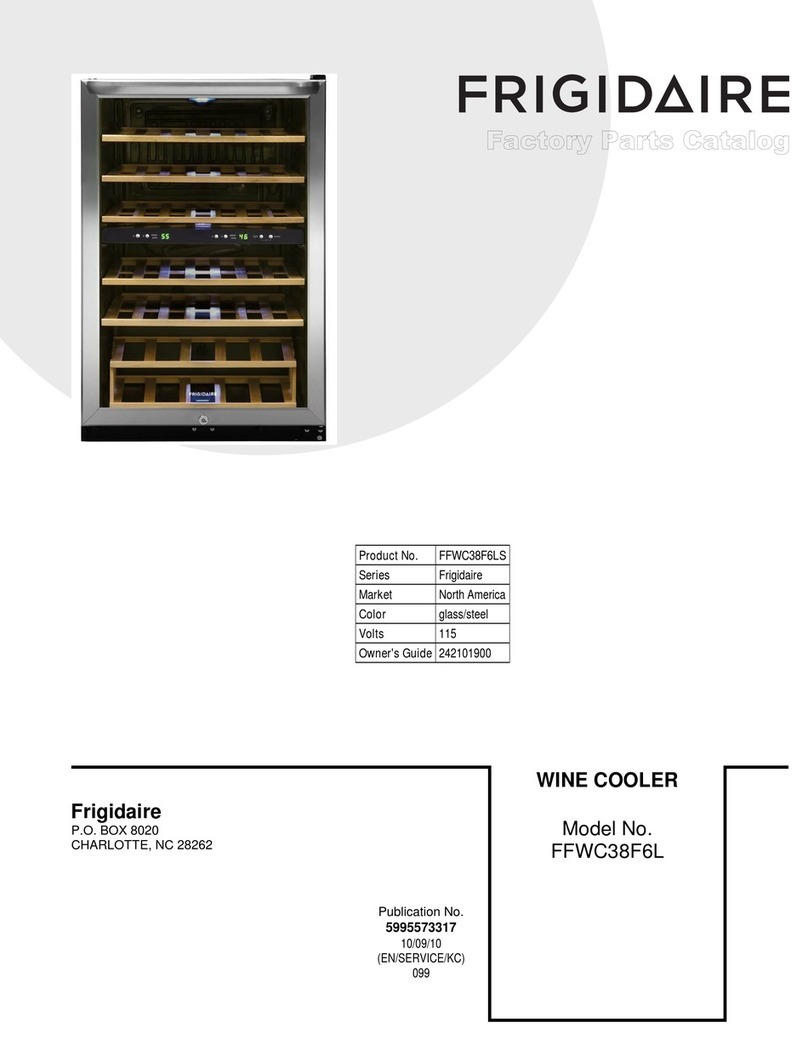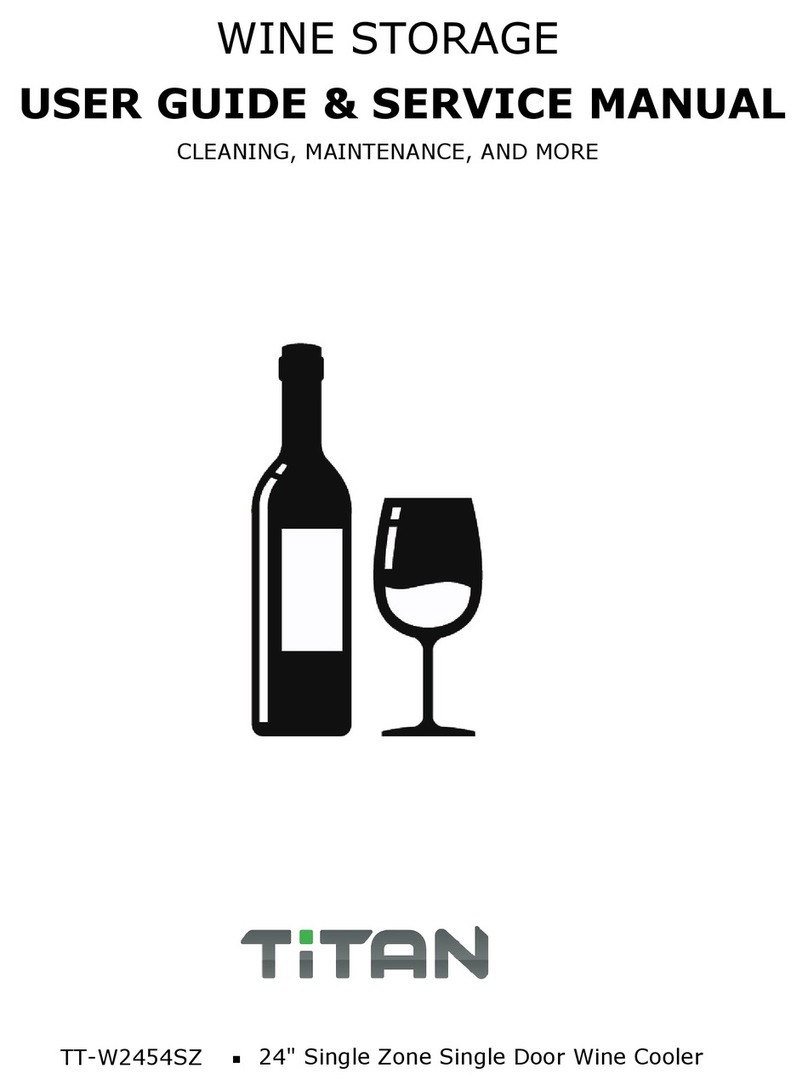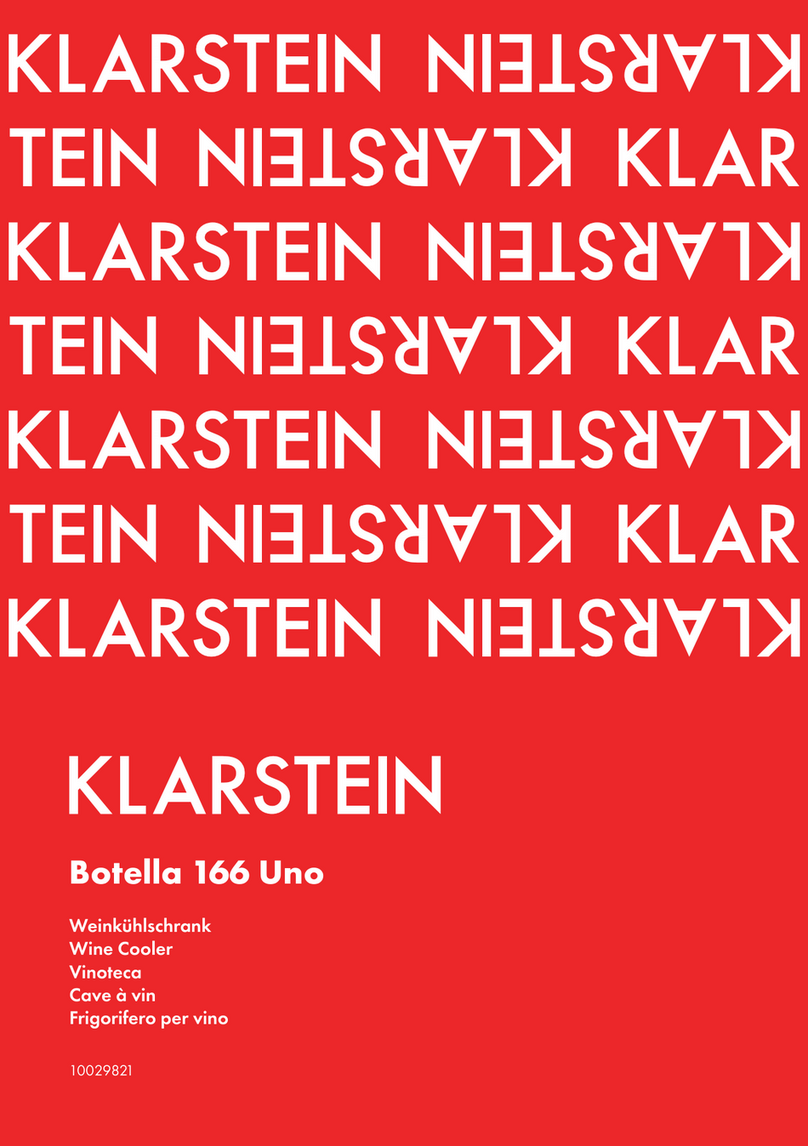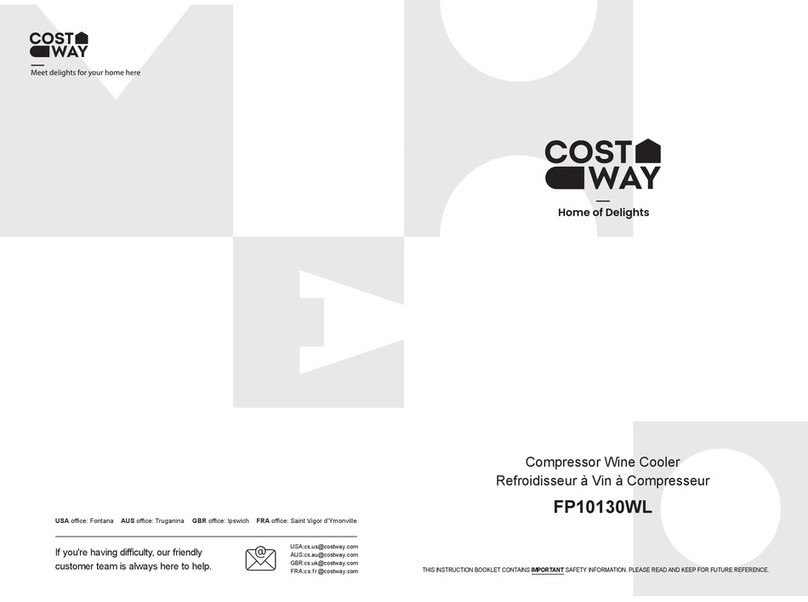
User Manual Espace Walk-in Cellar7
Installing your cellar (cont'd)
• Direct sunlight/heat: The cellar (particularly the
conditioning unit) must never receive prolonged exposure
to direct sunlight or similar sources of intense heat.
• Ventilation: The external vents of the conditioning unit
must always have access to free owing cool air from
the underside (min 0°C, max 35°C ambient), and an
unobstructed passage for hot air to escape from the top
into a large space that will allow for heat dissipation (for
example a living room).
• Flooring: If the cellar is being installed during
construction or renovation, it is recommended that
installation is completed prior to laying any ooring
material that might be damaged, such as timber or carpet.
• Power: Should service ever be required, access to switch
off, disconnect and reconnect the power cable needs to be
possible. A normal install of this unit includes running the
conditioner power cable through the pre-cut access hole
(sealed with grommets during operation) located in the
roof of the cellar, immediately above the conditioning unit:
If this is not possible, please ask a licensed and qualied
electrician to install a weatherproof power point inside
the cellar to provide power for the conditioner:
NOTE: Alternatively, hinged cabinetry is an ideal
aesthetic and functional solution to maintain access
to the cellar’s roof.
• Cellar door: The cellar door can be installed left or right
hand hinged – see warning after step 10 in the ‘Assembly
procedure’ on page 12. The cellar door itself is not
suitable for full integration or mounting behind cabinetry.
• Position of conditioner unit: Due to the interlocking
design of the wall panels, the conditioning unit can only
be installed next to the door on the front right side of
the cellar (when viewed from outside).
• Excess humidity/moisture removal: The conditioning
unit has an excess moisture run-off tube coming from
the underside of the conditioning unit (inside the cellar).
This must either be fed into a collection vessel (such as
an empty Champagne bottle) that is monitored/emptied
manually, or alternatively plumbed into your household
mains via gravity feed for automatic removal.
Mains plumbing is recommended for higher humidity
or tropical areas such as northern Queensland or the
Northern Territory.
• Noise: The compressor on the conditioner unit works
24 hours a day, and makes a light humming sound,
similar to that of an air conditioning unit.
Other considerations:
• Filters: The conditioning unit has a lter which must be
periodically cleaned. This is accessed from the underside
of the conditioning unit, on the outside of the cellar.
Failure to maintain this lter may compromise cellar
efciency, performance and warranty.
• Lighting: The cellar is supplied with individual battery
operated LED downlights. If you choose to install
aftermarket or custom lighting solutions, we suggest the
use of LED lights with low UV and heat characteristics,
plus the use of timers or motion sensors to remove the
risk of lights being left on for long periods as this may
affect your wine.
• Conditioner unit nish: In addition to the ability to install
your own cabinetry in front of and around the majority of
the unit, you may choose to spray paint the outer housing of
the conditioning unit to match the colour of your cabinetry
or surrounding material. Please ensure that this outer
housing is removed from the working mechanisms of the
conditioning unit prior to any spray coatings being applied.
